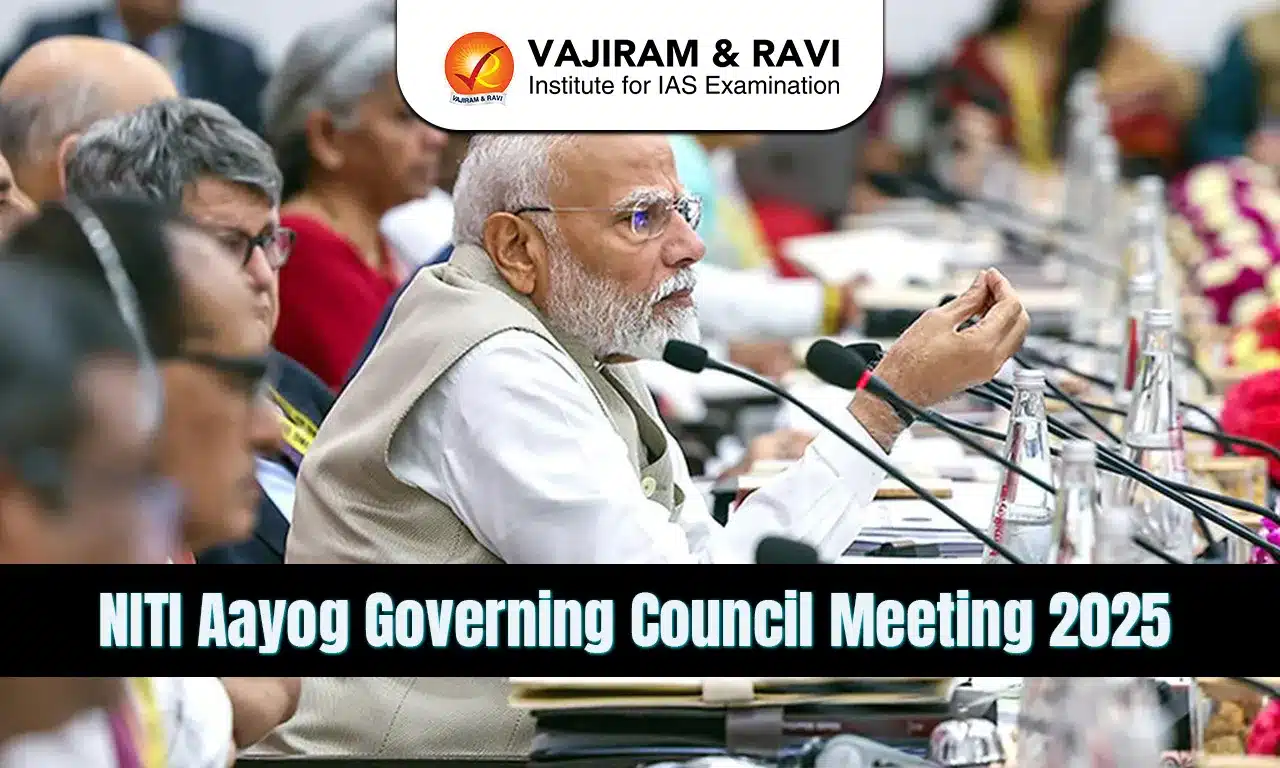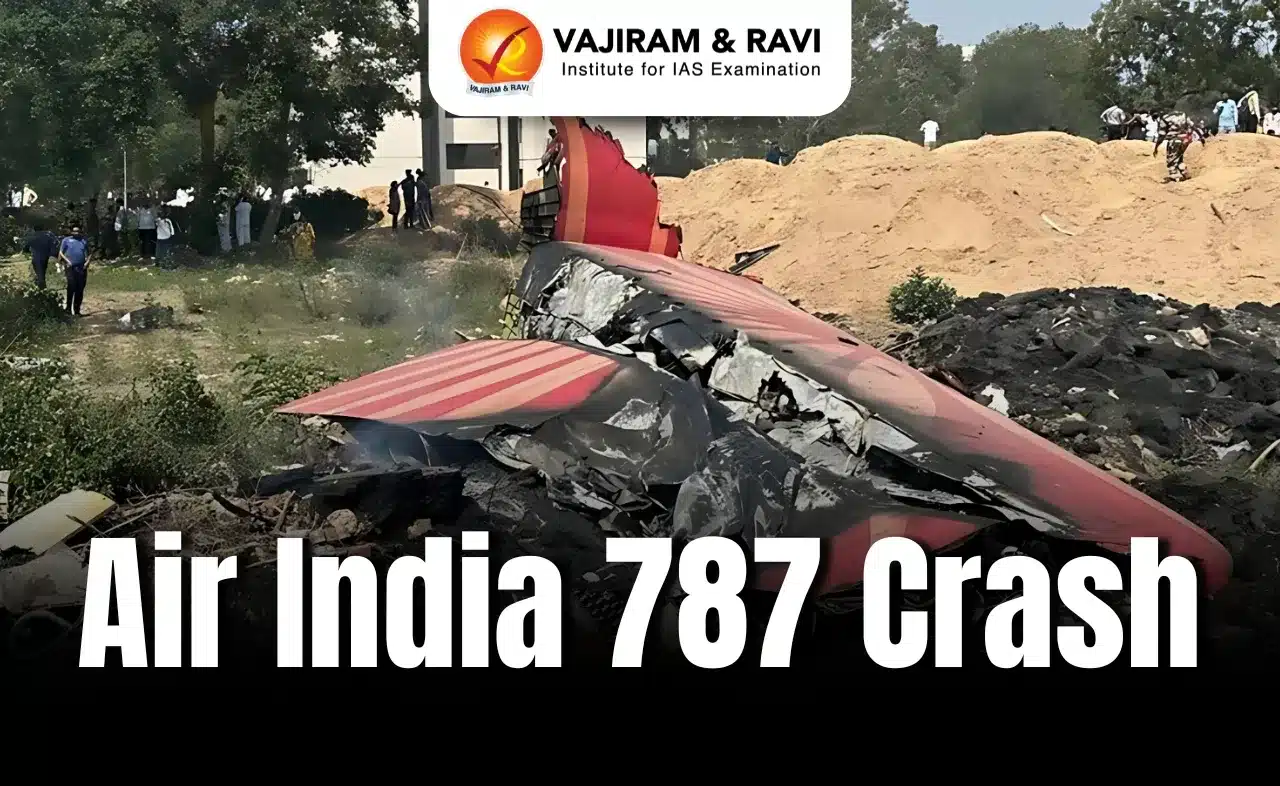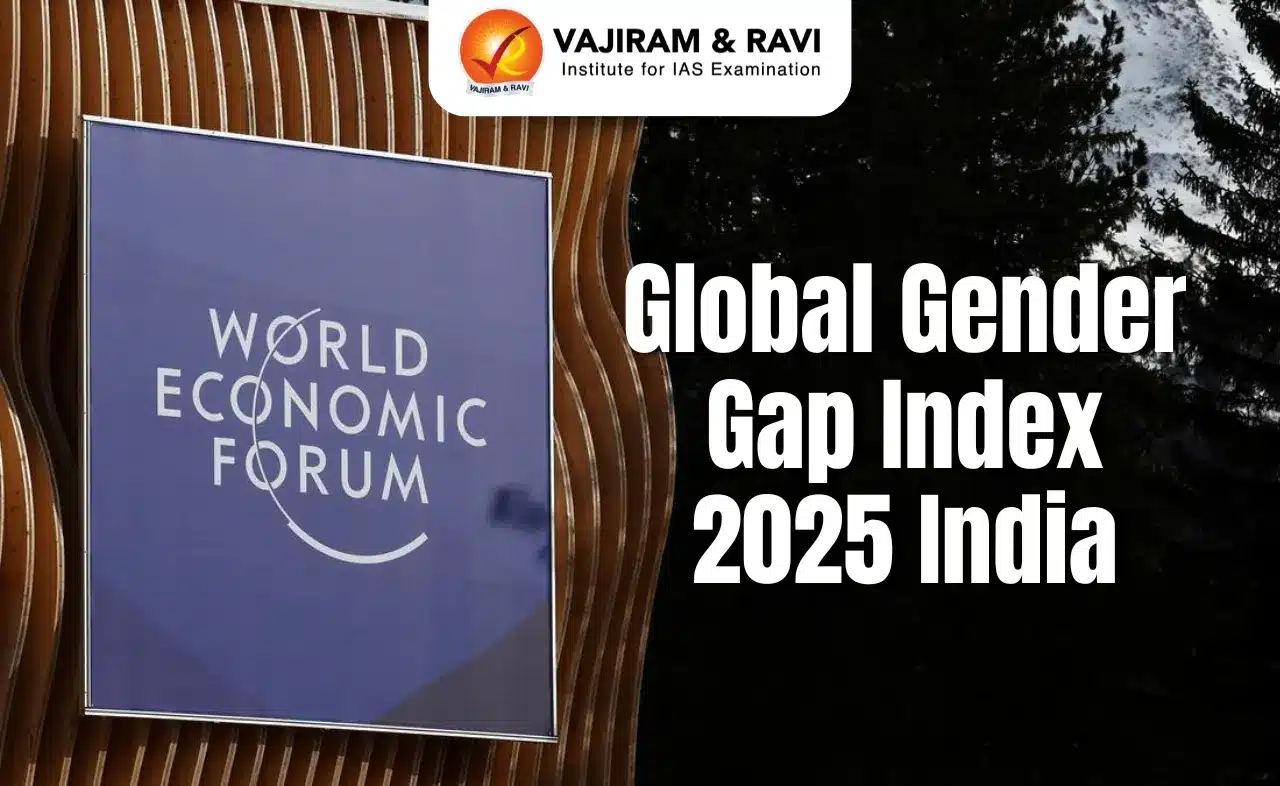NITI Aayog Latest News
- The 10th meeting of the Governing Council of NITI Aayog, chaired by Prime Minister Narendra Modi, was recently held in New Delhi.
About NITI Aayog
- The NITI Aayog (National Institution for Transforming India) is the premier policy think tank of the Government of India, established in 2015 to replace the Planning Commission.
- Its primary mandate is to promote cooperative federalism, facilitate evidence-based policymaking, and guide India’s long-term developmental strategy toward achieving Viksit Bharat @2047.
- Functions of NITI Aayog
- Formulating strategic and long-term policy frameworks.
- Coordinating between the Centre and states.
- Encouraging innovation, technology-driven governance, and sustainable development.
- Monitoring implementation of key national programmes.
- Functions of NITI Aayog
Governing Council of NITI Aayog
- The Governing Council is the apex decision-making body of NITI Aayog. It is chaired by the Prime Minister of India and comprises:
- Chief Ministers of all states and Union Territories with legislatures.
- Lieutenant Governors of other UTs.
- Union Ministers for key portfolios.
- Vice-Chairperson and senior officials of NITI Aayog.
- This council meets annually to discuss key policy issues, align Centre-state priorities, and foster a collaborative approach to India’s growth and development.
- It plays a crucial role in strengthening “Team India” spirit across different levels of government.
Highlights of PM Narendra Modi’s Address
- Focus on Viksit Bharat @2047
- PM Modi began by emphasizing the shared goal of making India a “Viksit Bharat” (developed nation) by 2047.
- He encouraged each state to align its developmental agenda accordingly, ensuring that every state, city, municipal body, and village transforms into a ‘Viksit’ unit.
- Team India Approach
- The Prime Minister underscored the importance of Centre-state collaboration. “If the Centre and states work together like Team India, no goal is impossible,” he stated.
- He advocated for coordinated planning across sectors such as infrastructure, services, governance, and innovation.
- Modernising Civil Preparedness
- Reflecting on Operation Sindoor and national security concerns, PM Modi emphasized that such efforts should not be one-time responses.
- He urged states to institutionalize civil defence mechanisms and enhance disaster resilience capabilities.
Strategic Recommendations by the PM
- Leverage Free Trade Agreements (FTAs)
- PM Modi advised states to strategically use India’s new FTAs to boost local manufacturing and exports. He called for an investor-friendly regulatory environment and proposed removing outdated laws to attract global investments.
- Tourism Development
- PM Modi proposed the “One State, One Global Destination” initiative. Each state should develop at least one world-class tourist hub with comprehensive infrastructure. This would catalyse both direct tourism revenue and the development of nearby cities.
- Urban and Workforce Reforms
- In response to rapid urbanisation, the Prime Minister stressed the need for future-ready cities built on principles of sustainability, innovation, and resilience. He also called for reforms to integrate more women into the workforce, urging states to craft gender-sensitive laws and policies.
Key State-Level Inputs and Demands
- Tamil Nadu’s Tax Revenue Demand
- Chief Minister M.K. Stalin demanded that states receive a 50% share in central taxes, up from the current 33.16%. He also urged for:
- A dedicated urban transformation mission like AMRUT 2.0.
- A Clean-Ganga-style river rejuvenation mission for Tamil Nadu rivers such as Cauvery and Vaigai.
- Chief Minister M.K. Stalin demanded that states receive a 50% share in central taxes, up from the current 33.16%. He also urged for:
- Andhra Pradesh’s Sub-Group Proposal
- CM N. Chandrababu Naidu proposed forming three sub-groups of states to work with the Centre:
- GDP Growth and Investments
- Population Management
- Technology-Driven Governance (using AI, drones, digital platforms)
- CM N. Chandrababu Naidu proposed forming three sub-groups of states to work with the Centre:
- Chhattisgarh’s 3T Model
- CM Vishnu Deo Sai proposed a 3T (Technology, Transparency, Transformation) development model under the “Chhattisgarh Anjor Vision Document”. It targets:
- Tenfold increase in per capita income.
- Doubling GSDP in five years.
- Naxal-free Chhattisgarh by March 2026.
- CM Vishnu Deo Sai proposed a 3T (Technology, Transparency, Transformation) development model under the “Chhattisgarh Anjor Vision Document”. It targets:
- Punjab’s Concerns on Water and Borders
- CM Bhagwant Mann raised Punjab’s claim over Yamuna river waters and demanded:
- Inclusion of border villages in the Vibrant Villages Programme.
- More funds for anti-drug initiatives and border security.
- Reversal of perceived “step-motherly treatment” by the Centre.
- CM Bhagwant Mann raised Punjab’s claim over Yamuna river waters and demanded:
NITI Aayog Meeting FAQs
Q1. What is the Governing Council of NITI Aayog?
Ans. It is NITI Aayog’s top decision-making body comprising the PM, CMs, LGs, and Union Ministers.
Q2. What was the theme of the 10th Governing Council meeting?
Ans. The theme was “Viksit Rajya for Viksit Bharat @2047.”
Q3. What reforms did PM Modi urge states to implement?
Ans. Modi called for leveraging FTAs, removing obsolete laws, boosting tourism, and increasing women’s workforce participation.
Q4. What was Tamil Nadu’s key demand at the meeting?
Ans. Tamil Nadu demanded a 50% share in central taxes and a Clean-Ganga-style mission for its rivers.
Q5. How many state leaders attended the 2025 NITI Aayog meeting?
Ans. 31 out of 36 CMs and LGs attended the meeting, marking record participation.
Last updated on June, 2025
→ UPSC Notification 2025 was released on 22nd January 2025.
→ UPSC Prelims Result 2025 is out now for the CSE held on 25 May 2025.
→ UPSC Prelims Question Paper 2025 and Unofficial Prelims Answer Key 2025 are available now.
→ UPSC Calendar 2026 is released on 15th May, 2025.
→ The UPSC Vacancy 2025 were released 1129, out of which 979 were for UPSC CSE and remaining 150 are for UPSC IFoS.
→ UPSC Mains 2025 will be conducted on 22nd August 2025.
→ UPSC Prelims 2026 will be conducted on 24th May, 2026 & UPSC Mains 2026 will be conducted on 21st August 2026.
→ The UPSC Selection Process is of 3 stages-Prelims, Mains and Interview.
→ UPSC Result 2024 is released with latest UPSC Marksheet 2024. Check Now!
→ UPSC Toppers List 2024 is released now. Shakti Dubey is UPSC AIR 1 2024 Topper.
→ Also check Best IAS Coaching in Delhi
Tags: mains articles niti aayog upsc current affairs upsc mains current affairs






















